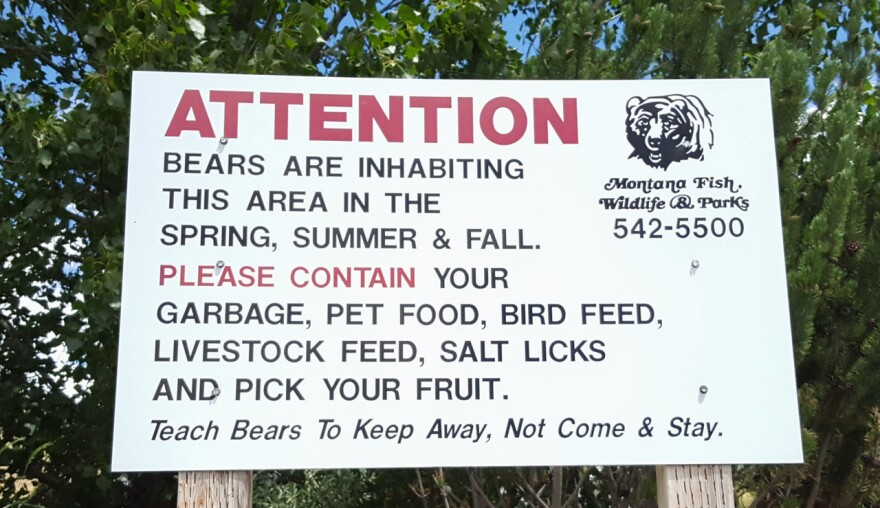Wildlife management has always involved community education and interaction with the public. But as Montana’s population grows, wildlife experts increasingly need to work on their people skills.
Montana Fish, Wildlife and Parks received more calls than usual about baby animals this spring.
“People have a soft spot for baby animals,” said Greg Lemon, the communication and education division administrator for FWP.
Baby rabbits, baby deer, baby birds — you name it, Lemon says, people are calling with concerns. Usually, callers worry that these animals have been abandoned, but many species leave their young alone for short periods.
Holding or relocating a young animal may not seem like a big deal, but that kind of interaction falls into the category of “human-wildlife conflicts.” This type of conflict has been increasing in Montana.
“When you look at our communities that have been expanding, we're starting to see more conflicts,” Lemon said.
Over the past decade Montana’s population grew by about 10%. Lemon says human-wildlife conflicts are more of a problem than ever before, and that’s to be expected in a state that saw the third highest population surge in the country over the last two years.
“In Montana, all of the places where we've built towns used to be wildlife habitat and it's not anymore.”
Preventing conflicts between animals and humans can include everything from surveying opinions about wolves, installing electric fencing on ranches to fend off grizzlies and teaching people to take down bird feeders when bears are likely nearby. It also includes reminding the public that it's totally normal if a baby deer is by itself. A lot of that is not strictly biology, which most wildlife managers studied. It’s more about communicating that science.

“Certainly a big piece of that is human dimensions,” said Chad Bishop.
Bishop has seen the need for more effective messaging in the industry. He heads the wildlife biology department at the University of Montana and previously worked as an assistant director at Colorado Parks and Wildlife, the state’s main wildlife management agency.
Bishop said he’s witnessed several wildlife directors saying, 'I don't need any more biologists. We know what the problems are. I need somebody who can help me implement the implications of the biology.'
Bishop co-authored a 2021 paper published in Conservation Science and Practice that called for a more interdisciplinary education for wildlife professionals. The paper stated that these skills are vital in a field that deals with the fallout of climate change, loss of biodiversity and a polarized political climate.
University wildlife programs are focused on biology, physiology and ecology, meaning managers new to the field are often surprised by the work they actually end up doing.
“What they've discovered is that it's not so much about the biophysical aspects of these problems,” said Alex Metcalf, a University of Montana professor in the department of Society and Conservation. “They find themselves in town halls, in people's living rooms, in public comment sessions and having to navigate those social spaces.”
This has become such a common story, the University of Montana wildlife biology department is restructuring its curriculum to address it. Undergraduate students in the program will be required to take a human dimensions course starting in 2023.
Kari Eneas, who got her master’s degree from UM in 2020, has seen the difficulty in the human communication side of her work as the wildlife program manager for the Confederated Salish and Kootenai Tribes.
“If we can't bring what we know from a biology standpoint to them in a way that they understand, then there's a huge disconnect there and we're not gonna see the improvements that we need to reduce that conflict,” Eneas said.
Not everyone has supported the state’s current strategy of including human dimensions in wildlife management. A bill introduced in the 2019 legislative session would have outlawed the FWP from making decisions using “social science, human dimensions, or people's attitudes, opinions, or preferences.” The bill was unpopular among wildlife advocates and researchers, and died in process.
Wesley Sarmento is a FWP grizzly bear conflict manager in central Montana. He says learning more human dimensions skills in school would have been helpful, but he had to learn them with his boots on the ground.
“Most people, when you first meet 'em, they're gonna rip into you and tell you all the things that they think's wrong with the agency and with wildlife. By the third or fourth meeting, they're usually inviting you in for coffee or giving you cookies.”

